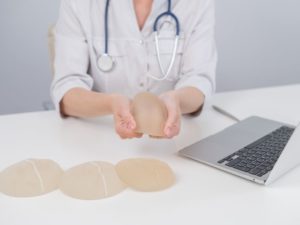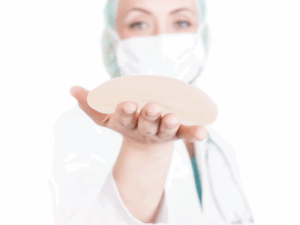Abdominoplasty
How to Get a Flat Stomach with Abdominoplasty Surgery?

Wondering how to get a flat stomach (Flat tummy) when diet and exercise aren’t enough? A flat, toned stomach is a common aesthetic goal, yet it is often challenging to achieve.
Well, abdominoplasty might be the solution!
Even with consistent exercise and a clean diet, many struggle with stubborn belly fat, loose skin, or muscle separation, especially after pregnancy, significant weight loss, or ageing.
In such cases, abdominoplasty, or tummy tuck surgery, can help create the desired abdominal contour.
In this blog, you will learn the role of abdominoplasty surgery in getting a flat stomach, details about the procedure, its benefits, recovery, common questions, and the science behind belly fat and why it sometimes resists diet and exercise.
What is Abdominoplasty?
Abdominoplasty is a corrective surgical technique that helps in the removal of excess fat and loose skin from the abdominal area.
This also tightens the underlying muscles creating a firmer, flatter midsection.
Abdominoplasty is designed to reshape the abdominal area by removing excess fat and tightening muscles.
The two main types of abdominoplasty are:
- Full Abdominoplasty: Involves tightening muscles and removing the surplus fat and skin from the upper and lower abdomen region.
- Mini Tummy Tuck: It targets only the lower abdomen and is less invasive.
How Abdominoplasty Helps You Achieve a Flat Stomach
Abdominoplasty addresses three common causes of abdominal bulging:
- Excess skin – from weight loss or pregnancy.
- Stubborn belly fat – that remains despite weight loss.
- Muscle laxity (diastasis recti) – where the abdominal muscles have separated and weakened.
By targeting all three, a tummy tuck offers a more sculpted, proportionate body shape, which may not be achievable through natural methods alone.
The key benefits of abdominoplasty include a firmer stomach, improved posture, and renewed self-confidence.
Why Diet and Exercise Alone Might Not Work: The Science Behind Abdominoplasty
Despite regular workouts and healthy meals, many people find belly fat incredibly resistant. Here’s why.
1. Hormonal Influence
Hormones like cortisol, insulin, and oestrogen play a key role in fat distribution. Chronic stress elevates cortisol, which promotes abdominal fat storage, especially visceral fat, which lies deep around organs and is hard to shed.
Postmenopausal women, for instance, may notice increased belly fat due to declining oestrogen, which alters how the body stores fat.
2. Genetics
Your genes significantly influence your body shape and fat distribution. If your parents carry more abdominal fat, you might, too, even if you lead a healthy lifestyle.
3. Ageing and Metabolism
As we age, the body’s metabolic rate slows down. Muscle mass declines, and the body burns fewer calories at rest. Combined with hormonal changes, this naturally leads to fat accumulation around the waist.
4. Diastasis Recti and Muscle Separation
Diastasis recti can create the appearance of a rounded stomach. This occurs particularly during pregnancy and can persist long after.
Exercise alone won’t fix this separation, as the connective tissue needs to be repaired surgically.
5. Skin Laxity After Weight Loss
People who have lost dramatic weight often have excess loose skin that no amount of exercise can fix. Skin loses elasticity with age, and once stretched beyond a certain point, it doesn’t retract. This contributes to a “bulging” look, even without much fat.
6. Fat Cell Resistance
Studies have shown that fat cells in the abdomen have higher concentrations of alpha-2 receptors, which inhibit fat breakdown. This makes it harder to “burn off” abdominal fat compared to areas like the thighs or arms.
7. Lifestyle Plateaus
Even with a perfect routine, your body may reach a plateau. Once your body adapts to your calorie intake and activity level, weight loss can stall, and fat loss slows, especially in stubborn areas like the belly.
Why Abdominoplasty Is the Next Logical Step
When all other methods plateau, abdominoplasty provides:
- Structural correction (muscle repair)
- Aesthetic enhancement (skin tightening and fat removal)
- Functional improvement (better posture and core strength)
Benefits of Abdominoplasty Surgery
From removing sagging skin to restoring core strength, the benefits of abdominoplasty go beyond aesthetics.
1. A Flatter, More Defined Abdomen
Removing excess skin and tightening muscles creates a sleeker waistline.
2. Correction of Diastasis Recti
This condition is commonly seen in postpartum women. Muscle separation can lead to bulging and weakening of the core. The abdominoplasty procedure helps restore muscle integrity.
3. Improved Posture and Core Function
Stronger abdominal muscles improve spinal support, reduce back pain, and promote better posture.
4. Enhanced Body Confidence
The improved appearance of your body can help boost self-esteem and lead to a more active lifestyle.
5. Long-lasting Results
With a healthy lifestyle, results from abdominoplasty can last for many years.
Differences between Mini Tummy Tuck vs Full Tummy Tuck
Understanding the difference between a mini and full tummy tuck surgery is essential so you can opt for the surgery that will benefit you more.
Feature | Full Abdominoplasty | Mini Tummy Tuck |
Target Area | Upper & lower abdomen | Below the navel |
Muscle Repair | Yes | Sometimes not needed |
Incision | Longer | Shorter |
Recovery | Longer | Faster |
Ideal for | Post-pregnancy or significant weight loss | Mild lower belly sagging |
Who Is a Suitable Candidate?
You might be a good candidate for a tummy tuck surgery if:
- You’re at a stable weight.
- You have loose or hanging abdominal skin.
- You’ve experienced pregnancy-related muscle separation.
- You do not smoke or are willing to quit before surgery.
- You are not planning future pregnancies.
- You understand the risks and benefits and have realistic expectations.
Abdominoplasty Procedure
1. Consultation
The surgeon performs a thorough evaluation to ensure you are suitable for the surgery.
2. Anaesthesia
Most tummy tucks are done under general anaesthesia.
3. Incisions and Muscle Tightening
The surgeon will reshape the abdominal wall for a flat, more toned profile during the abdominoplasty procedure.
Incisions are made above the pubic area. Loose muscles are tightened and stitched into a firmer position.
4. Fat and Skin Removal
Excess skin and fat are surgically removed. A new belly button may be created.
5. Closure and Bandaging
After closing the incisions, a compression garment is applied to minimise swelling and aid recovery.
Recovery After Abdominoplasty Surgery
Abdominoplasty recovery typically takes several weeks, with visible improvements as swelling subsides.
Recovery typically involves:
- Swelling and bruising are common initially.
- Compression garments must be worn for a few weeks.
- 1–2 weeks rest before resuming light activities.
- 6 weeks rest before beginning any intense physical activities.
Following your surgeon’s advice during abdominoplasty recovery is essential for optimal and lasting results.
Maintaining Results After Abdominoplasty
To ensure your new, flatter stomach (Flat tummy) remains smooth and toned for years to come, consider the following evidence-based strategies:
- Follow a balanced, nutrient-dense diet: Focus on whole foods, lean proteins, vegetables, fruits, and healthy fats.
- Regular physical activity: Include cardiovascular exercises and strength training to support core muscles and overall fat metabolism.
- Stay hydrated: Drinking adequate water helps regulate metabolism, reduce bloating, and support skin elasticity during healing.
- Avoid smoking and limit alcohol: Smoking impairs healing and contributes to skin ageing. In contrast, excessive alcohol is associated with central fat gain.
- Maintain a stable weight: Significant weight fluctuations can compromise the procedure’s results. Aim to maintain post-surgery weight range through mindful eating and activity.
- Wear supportive garments as recommended: Choosing well-fitted clothing can help support posture and core strength in the long term.
- Attend follow-up appointments: Review your recovery with your surgeon regularly to ensure progress and allow early intervention if needed.
By building your daily routine, you can enjoy the benefits of abdominoplasty surgery for many years, boosting physical comfort and confidence.
Why Choose Dr Faisal Salim for Your Abdominoplasty?
A surgeon with precise knowledge is crucial for achieving safe, natural, and long-lasting results. Here’s why patients trust Dr Faisal Salim:
- UK-Trained Consultant Plastic Surgeon with specialised experience in both cosmetic and reconstructive procedures.
- Completed advanced training at the world-renowned Westminster and Hammersmith Hospital, a leading centre for plastic surgery.
- Known for delivering natural-looking, tailored results focusing on precision and patient safety.
- Provides comprehensive aftercare and guidance throughout your recovery journey.
- Backed by a strong reputation and excellent patient testimonials.
Reclaim Your Confidence with Dr Faisal Salim’s Expertise
Getting a flat stomach (Flat tummy) is not always as simple as eating well or exercising regularly. While these are crucial pillars of a healthy lifestyle, they might not address stubborn belly fat, loose abdominal skin, or separated muscles, especially after pregnancy or significant weight loss.
That’s where abdominoplasty surgery offers a scientifically backed, transformative solution.
If you are considering a mini tummy tuck to address a mild lower belly bulge or a full abdominoplasty for extensive muscle repair and skin tightening, the results can significantly enhance your appearance.
Book an appointment today with Dr Faisal Salim and discover how abdominoplasty can help you achieve the flat stomach you’ve always wanted.
FAQs About Abdominoplasty
There is mild to moderate discomfort post-surgery, managed well with prescribed medications.
Usually between 2 to 4 hours.
Light walking after a few days is encouraged. Strenuous activity may resume in 6–8 weeks.
You need to maintain a stable weight and a healthy lifestyle so that the results can be maintained for a long time.
However, if weight increases, the fat can return back in the treated areas.
Liposuction is commonly done alongside tummy tuck surgery for better contouring.
It’s not a weight loss procedure, but many patients look significantly slimmer due to the removal of excess skin and fat.
Patient Testimonials





